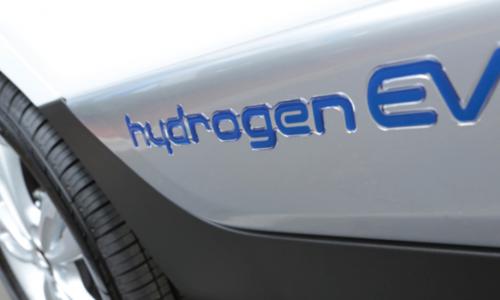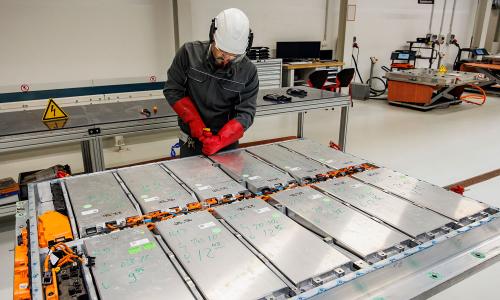Fuel cell vehicles use hydrogen gas to power an electric motor. Unlike conventional vehicles which run on gasoline or diesel, fuel cell cars and trucks combine hydrogen and oxygen to produce electricity, which runs a motor. Since they’re powered entirely by electricity, fuel cell vehicles are considered electric vehicles (“EVs”)—but unlike other EVs, their range and refueling processes are comparable to conventional cars and trucks.
Converting hydrogen gas into electricity produces only water and heat as a byproduct, meaning fuel cell vehicles don’t create tailpipe pollution when they’re driven. Producing the hydrogen itself can lead to pollution, including greenhouse gas emissions, but even when the fuel comes from one of the dirtiest sources of hydrogen, natural gas, today’s early fuel cell cars and trucks can cut emissions by over 30 percent when compared with their gasoline-powered counterparts. Future renewable fuel standards—such as the requirements currently in place in California—could make hydrogen even cleaner.
Because fuel cell vehicles are only beginning to enter the US market, interested drivers should ensure they live near hydrogen refueling stations.
Hydrogen fuel cell features
Hydrogen fuel cell vehicles combine the range and refueling of conventional cars with the recreational and environmental benefits of driving on electricity.
Refueling a fuel cell vehicle is comparable to refueling a conventional car or truck; pressurized hydrogen is sold at hydrogen refueling stations, taking less than 10 minutes to fill current models. Some leases may cover the cost of refueling entirely. Once filled, the driving ranges of a fuel cell vehicle vary, but are similar to the ranges of gasoline or diesel-only vehicles (200-300 miles). Compared with battery-electric vehicles—which recharge their batteries by plugging in—the combination of fast, centralized refueling and longer driving ranges make fuel cells particularly appropriate for larger vehicles with long-distance requirements, or for drivers who lack plug-in access at home.
Like other EVs, fuel cell cars and trucks can employ idle-off, which shuts down the fuel cell at stop signs or in traffic. In certain driving modes, regenerative braking is used to capture lost energy and charge the battery.
Differences between fuel cell cars and other EVs
Battery electric vehicles run off an electric motor and battery. This offers them increased efficiency and, like fuel cell vehicles, allows them to drive emissions-free when the electricity comes from renewable sources. Unlike fuel cell cars and trucks, battery electric vehicles can use existing infrastructure to recharge, but must be plugged in for extended periods of time. Learn more about how battery electrics work.
Plug-in hybrid electric vehicles are similar to battery electric vehicles but also have a conventional gasoline or diesel engine. This allows them to drive short distances on electricity-only, switching to liquid fuel for longer trips. Although not as clean as battery electric or fuel cell vehicles, plug-in hybrids produce significantly less pollution than their conventional counterparts. Learn more about how plug-in vehicles work.
Conventional hybrids also have conventional engines and an electric motor and battery, but can’t be plugged-in. Though cleaner than conventional cars and trucks, non-plug-in hybrids derive all their power from gasoline and diesel, and aren’t considered electric vehicles. Learn more about how hybrids work.
Learn more about electric vehicle technology here, including its potential as a nationwide oil-saving solution.




